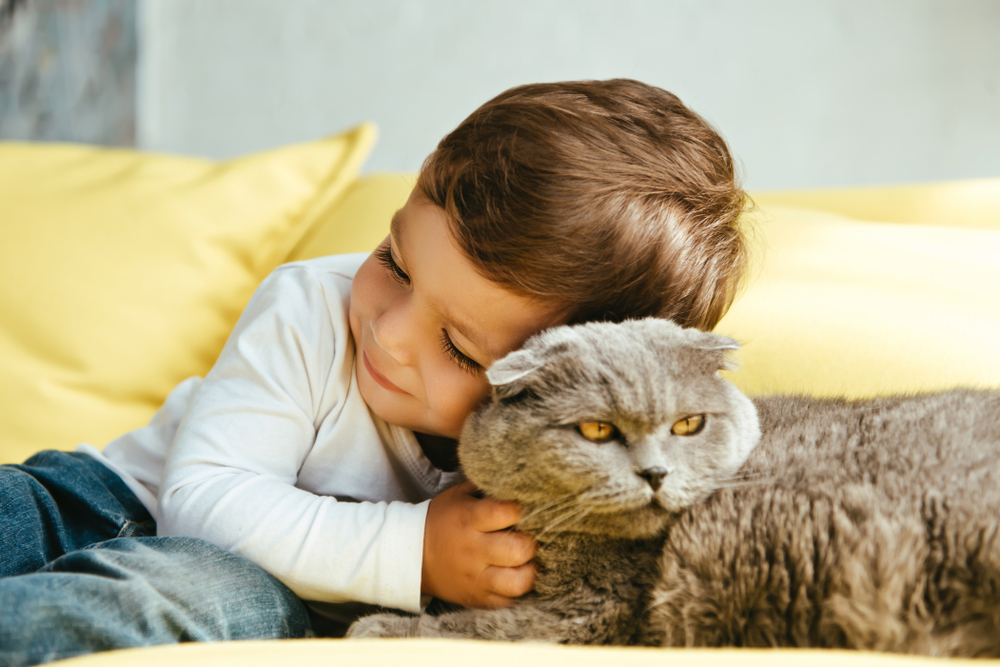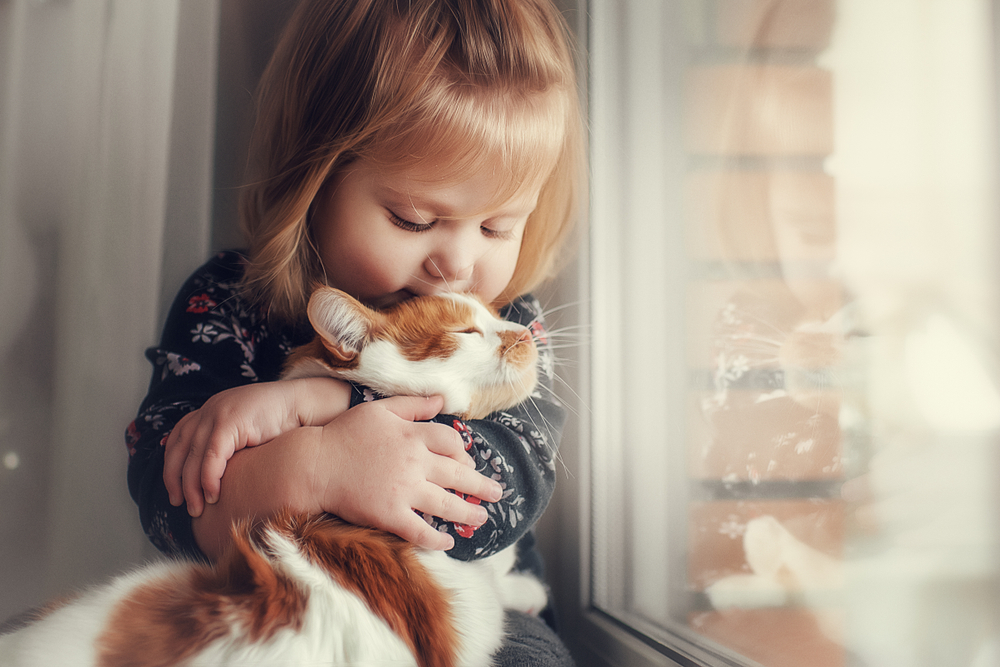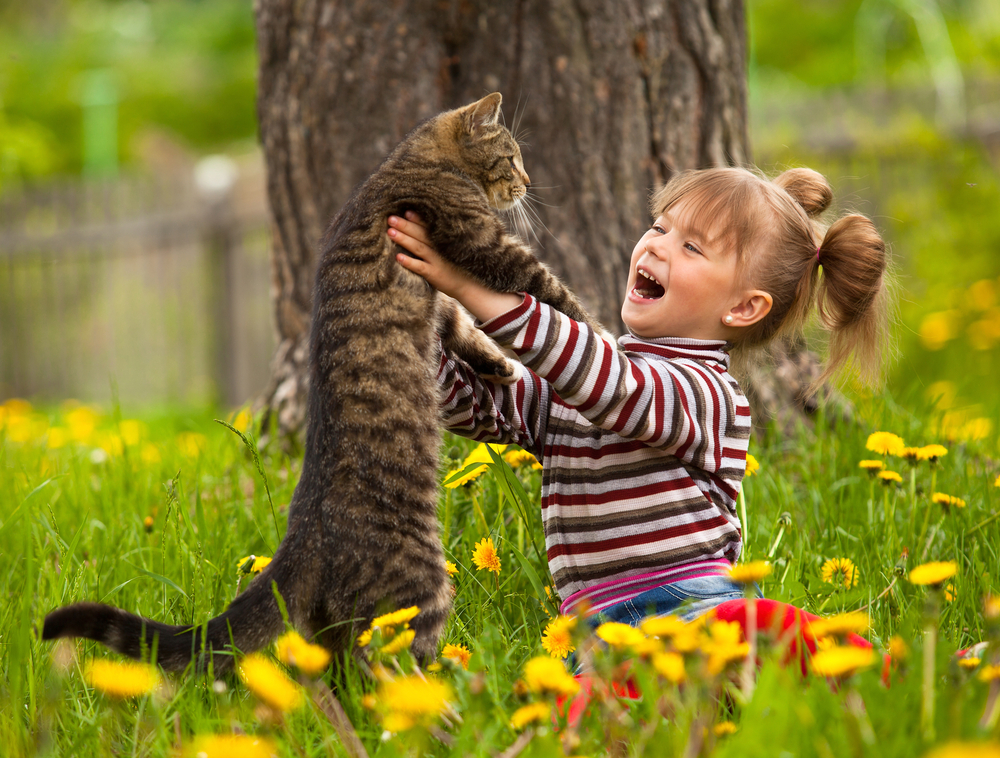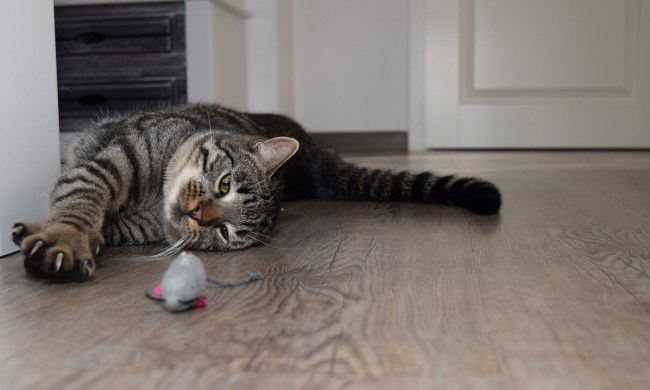It’s no secret that having pets is good for children. Sharing their home with a pet not only teaches kids to empathize with others but also instills a sense of cooperation and responsibility in young children. Perhaps most importantly, research has proven that babies who grow up in a household with pets are up to 77 percent less likely to develop a pet allergy later in life. But if you’ve ever found yourself frantically searching phases like “stop toddler pulling kitty tail,” then you’ve discovered one drawback of having both kids and cats. We’ve found the best expert advice for the best way to stop your toddler from being too rough with the family cat. Here’s what you should know.

Why toddlers pull on your cat’s tail
You love your child, but you also love your cat, and you want the two to love each other just as much. Sometimes, though, children roughhouse with cats, especially when they’re toddlers. According to parent educator Judy Arnall, who works with the Calgary, Canada-based group Attachment Parenting Canada, young toddlers aren’t being deliberately naughty when they pull your cat’s tail or throw toys. They’re learning cause and effect without considering the consequences, which Arnall says kids are incapable of until they’re around three and a half years old.
Unfortunately, there can be serious consequences for your cat, even if your child isn’t old enough to process them. While tail pull injuries won’t damage your cat’s spinal cord, they can cause severe nerve damage—and may even result in a broken tail. Understandably, your cat may bite or scratch your child in response to having her tail pulled. According to experts, this is the number-one reason children should not be left alone with a cat.
How to teach your toddler to be gentle with your cat
Children are particularly impulsive when they’re young. Because they’re naturally curious and don’t understand consequences yet, toddlers may pull a cat’s tail, whiskers, or ears. Young children may also throw their toys or hit a pet. While this behavior is alarming, experts say it’s generally a phase and that you’ll be able to correct their behavior with time and patience. Here’s how to teach your toddler to interact safely (and gently) with your cat.

Step One: Give it time
As tempting as it is to introduce your toddler to a new cat, your cat needs time to settle in first. Make sure your fur baby has easy access to her essential needs (a litter box, water, food, toys, and a scratching post), and allow her to have her own space where she can get away from the family if she feels overwhelmed.
Step Two: Start off slowly
While your child is playing calmly in a play pen, allow your cat to venture into the room. Ask your child to ignore the cat for the time being. This can be difficult, as most children are immediately drawn to animals. Allow your cat to explore the room. It’s important for Miss Kitty to choose whether or not she wants to interact with the child. Feel free to use treats to encourage your cat to get closer to your child, but don’t force the meeting.
Step Three: Allow your toddler and cat to spend more time together
When your child is able to spend a few minutes in the same room with Miss Kitty without trying to touch her, you can allow your cat to roam the room for longer amounts of time. Reward your child for good behavior, and take the cat out of the room immediately if your child has a tantrum or throws anything. This teaches your child that playtime with kitty only happens when they’re on their best behavior.
Step Four: Teach your child how to pet the cat
If your curious kitty has warmed up to your child enough to approach, it’s time to show your toddler how and where to pet your cat. Focus primarily on the back, shoulders, and head, especially the chin, between the ears, and the cheeks. Demonstrate the amount of pressure to use when petting Miss Kitty. Instruct your child not to touch the tail, ears, or belly. (We also recommend reading Elizabeth Verdick’s “Tails Are Not for Pulling” to your child.)

Having cats and kids in the home can be a delight, but chaos will ensue if your rambunctious toddler makes a habit of pulling your cat’s tail. Spend time teaching your child how to interact with your cat, and make sure to supervise their time together until your child knows how to play gently. When in doubt, rely on the professionals. Cat behaviorist Jackson Galaxy has several informative YouTube videos that can make teaching your child how to play with Miss Kitty much easier.



